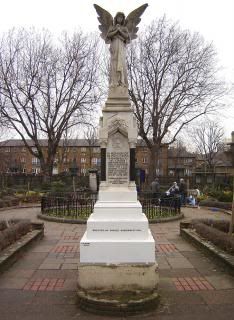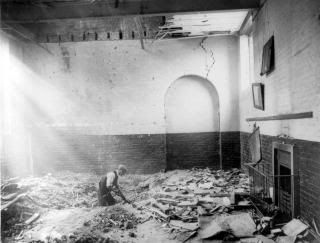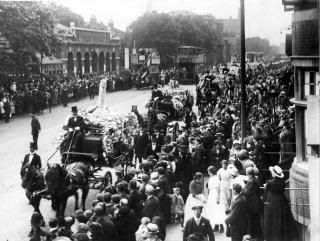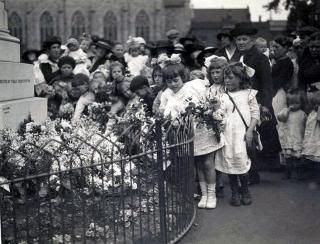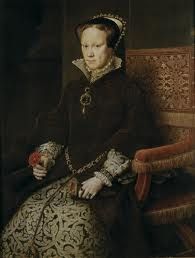Annie Besant and the Matchgirls
One hot June day in 1888 the journalists at 'The Link' newspaper were surprised to find dozens of young girls crowding into their offices, however surprise turned to shock as the reason for their visit began to unfold. The young women were workers at Bryant and May's match factory who
 had
walked out of employment on behalf of their friends who had been fired
for petty reasons. In those days before the Welfare system their actions
were unprecedented and admirable.
had
walked out of employment on behalf of their friends who had been fired
for petty reasons. In those days before the Welfare system their actions
were unprecedented and admirable.The journalist who was determined to bring their story to the whole country was Annie Besant.
The Bryant and May factory stood in Fairfield Road which ran off of Bow Road. Its working conditions were horrendous as the matches had to be dipped in yellow phosphorous, a dangerous substances which led to what was known as 'phossy jaw' a form of cancer of the face.
In Annie Besant the matchgirls found a willing champion for their cause. In the following copy of 'The Link' her article was headed 'White Slavery in London' and went on to describe how the match girls, some as young as thirteen worked from 6am to 6pm with just two short breaks.
From their meagre wages her readers were told the women had to house, feed and clothe themselves, the wages were further decreased if they left a match on the bench and by the cost of paint, brushes and other equipment they needed to do their work. Then apart from the likelihood of developing 'phossy jaw' there were there dangers of losing a finger or even a hand in unguarded machinery.
 The
answer from the employers was to try and bully the woman back to work,
but this failed when another worker was dismissed for no good reason and
the whole workforce of 1.400 women walked out and and went on to set up
their strike committee rooms in Bow Road. While the women were on
strike they were paid from the strike fund.
The
answer from the employers was to try and bully the woman back to work,
but this failed when another worker was dismissed for no good reason and
the whole workforce of 1.400 women walked out and and went on to set up
their strike committee rooms in Bow Road. While the women were on
strike they were paid from the strike fund.Eventually their employers conceded that working conditions would be improved and the fines abolished, with this and an improvement in pay the women went back to work and gradually yellow phosphorous was phased out in the production of matches.
This was quite a difference considering only six years before Mr Bryant, wishing to curry
There had been strikes at the factory before with little change in conditions, but it was to be these young women that caught the public imagination, maybe the reason was because they weren't afraid to state their case and were prepared to march and hold meetings and of course they faced the employers and won.
Ben Tillett, a union leader of the time, paid tribute to the Match Workers whose strike he called 'the beginning of the social convulsion which produced the New Unionism'.
The year following the matchgirls strike the gas workers and general labourers formed a union which secured an eight hour working day, and in the same year 60.000 dock workers called a strike which virtually close one stretch of the Thames for over a month. Through the matchgirls it seemed the working class had realised its power.
For anyone tracing their ancestry might like to see if one of the strikers were among their ancestors, if so you can check through the Strike Fund Register:
http://www.unionhistory.info/matchworkers/browse.php?Page=1&Book=Match+Workers+Strike+Fund+Register
Social and political reform seems not to have satisfied Annie Besant's hunger for some all-embracing truth to replace the religion of her youth. She became interested in Theosophy, a religious movement founded in 1875 and based on Hindu ideas of karma and reincarnation. As a member and later leader of the Theosophical Society, she helped to spread Theosophical beliefs around the world, notably in India.
Annie Besant first visited India in 1893 and later settled there, becoming involved in the Indian nationalist movement. In 1916 she established the Indian Home Rule League, of which she became president. She was also a leading member of the Indian National Congress.
Mahatma Gandhi said that Annie Besant awoke India from the deep sleep.
She died in India on 20 September 1933
 country or death the exodus began.
country or death the exodus began.
 World
War Two was the doctor in charge of air raid shelters at Wapping,
Hannah took to this extra responsibility with her usual energy, going
from shelter to shelter even though the bombs were dropping around her.
World
War Two was the doctor in charge of air raid shelters at Wapping,
Hannah took to this extra responsibility with her usual energy, going
from shelter to shelter even though the bombs were dropping around her. oebe
Hessel was born in Stepney in 1713 and baptized at the local church of
St Dunstans. There are two stories of her early life, one that when her
mother died young her father, who was a soldier had two options one to
put her into care of the parish, or two take him with him, he chose the
second option but as girls or women weren't allowed in the army he
dressed her as a boy taught her the fife and drum and returned with
Phoebe to his unit.
oebe
Hessel was born in Stepney in 1713 and baptized at the local church of
St Dunstans. There are two stories of her early life, one that when her
mother died young her father, who was a soldier had two options one to
put her into care of the parish, or two take him with him, he chose the
second option but as girls or women weren't allowed in the army he
dressed her as a boy taught her the fife and drum and returned with
Phoebe to his unit.  killing the Dragon) on its Regimental Colours. She stayed in the army
for seventeen year seeing action in the Caribbean and Europe.
killing the Dragon) on its Regimental Colours. She stayed in the army
for seventeen year seeing action in the Caribbean and Europe.  she
was forced to go into the workhouse the Prince granted her half a
guinea a week, with this Phoebe left the workhouse and began selling her
wares once again. When in 1820 the Prince succeeded to the throne he
remembered Phoebe and invited her to his coronation, which was an honour
he didn't extend to his own wife Caroline of Brunswick who was
forbidden to attend the ceremony, she was in fact turned away at the
doors of Westminster Abbey while the ceremony took place inside.
she
was forced to go into the workhouse the Prince granted her half a
guinea a week, with this Phoebe left the workhouse and began selling her
wares once again. When in 1820 the Prince succeeded to the throne he
remembered Phoebe and invited her to his coronation, which was an honour
he didn't extend to his own wife Caroline of Brunswick who was
forbidden to attend the ceremony, she was in fact turned away at the
doors of Westminster Abbey while the ceremony took place inside.  Churchyard, a local pawnbroker, Hyam Lewis, paid for the headstone which marks her grave, the inscription reads:
Churchyard, a local pawnbroker, Hyam Lewis, paid for the headstone which marks her grave, the inscription reads:
 figures
in the whole borough. It was the same year that a new school was built
and Clara moved to Fern Street. In Clara's class there were ninety
children with ages varying from two years old the regime at the school
was harsh, and not one Clara agreed with. If children moved in class
they were expected to be caned. One day she saw nineteen small boys for
not being able to knit.
figures
in the whole borough. It was the same year that a new school was built
and Clara moved to Fern Street. In Clara's class there were ninety
children with ages varying from two years old the regime at the school
was harsh, and not one Clara agreed with. If children moved in class
they were expected to be caned. One day she saw nineteen small boys for
not being able to knit. then she had the idea of the 'farthing bundle', even, it is said Queen Mary made donations to the cause.
then she had the idea of the 'farthing bundle', even, it is said Queen Mary made donations to the cause. “Farthing
bundles are full of very human things such as children love,” Clara
explained. “Tiny toys of wood, or tin, whole or broken, little balls,
doll-less heads or head-less dolls, whistles, shells, beads, reels,
marbles, fancy boxes, decorated pill boxes, scraps of patchwork, odds
and ends of silk or wool, coloured paper for dressing up, cigarette
cards and scraps.”
“Farthing
bundles are full of very human things such as children love,” Clara
explained. “Tiny toys of wood, or tin, whole or broken, little balls,
doll-less heads or head-less dolls, whistles, shells, beads, reels,
marbles, fancy boxes, decorated pill boxes, scraps of patchwork, odds
and ends of silk or wool, coloured paper for dressing up, cigarette
cards and scraps.”
